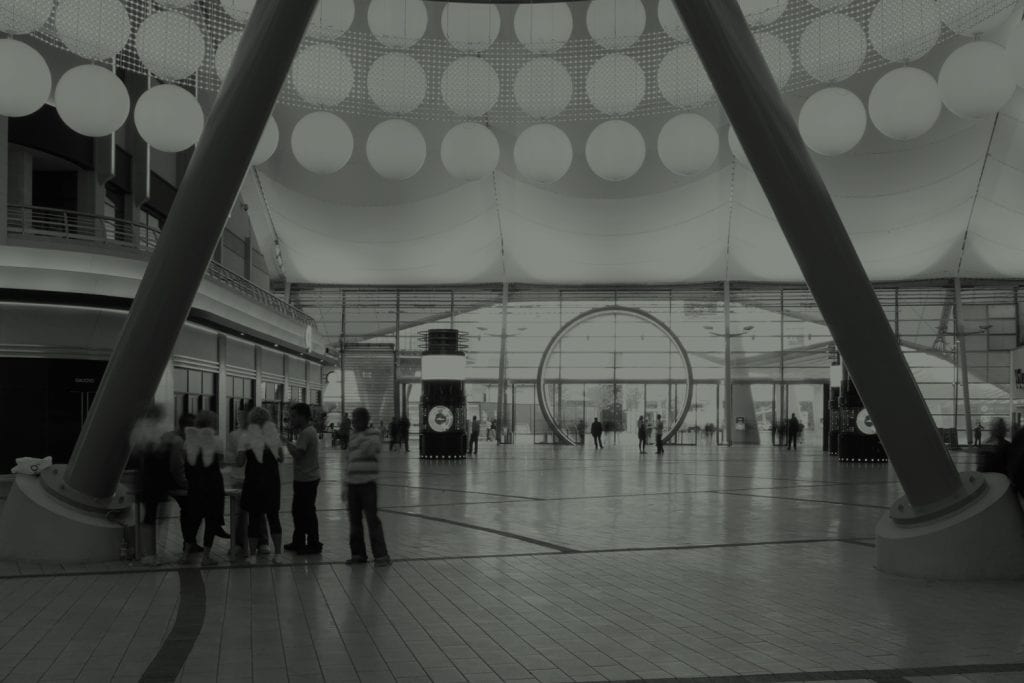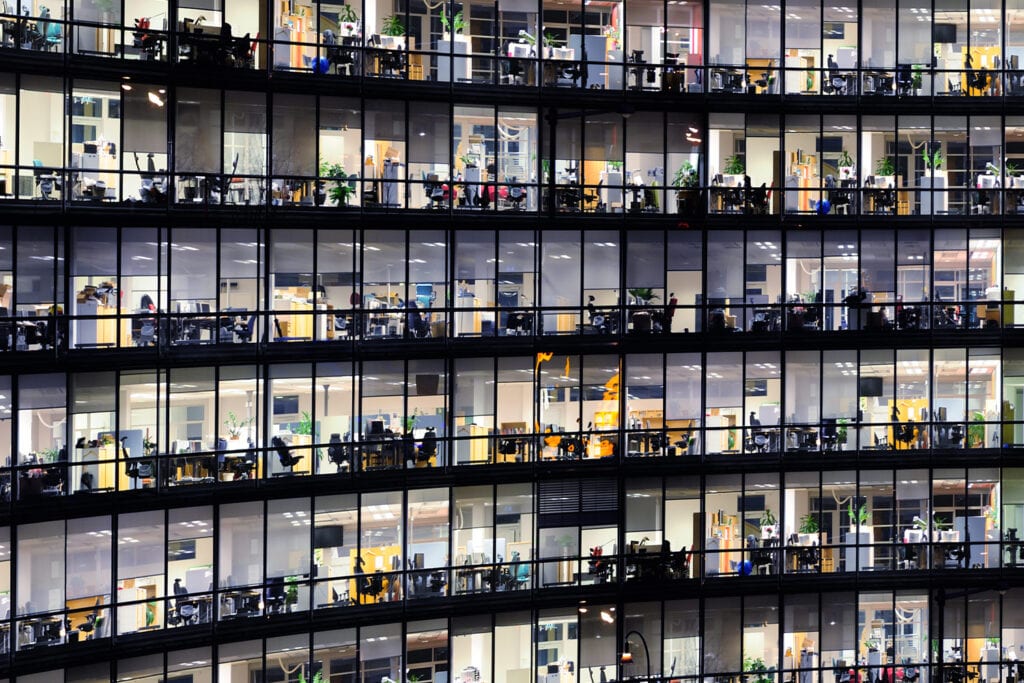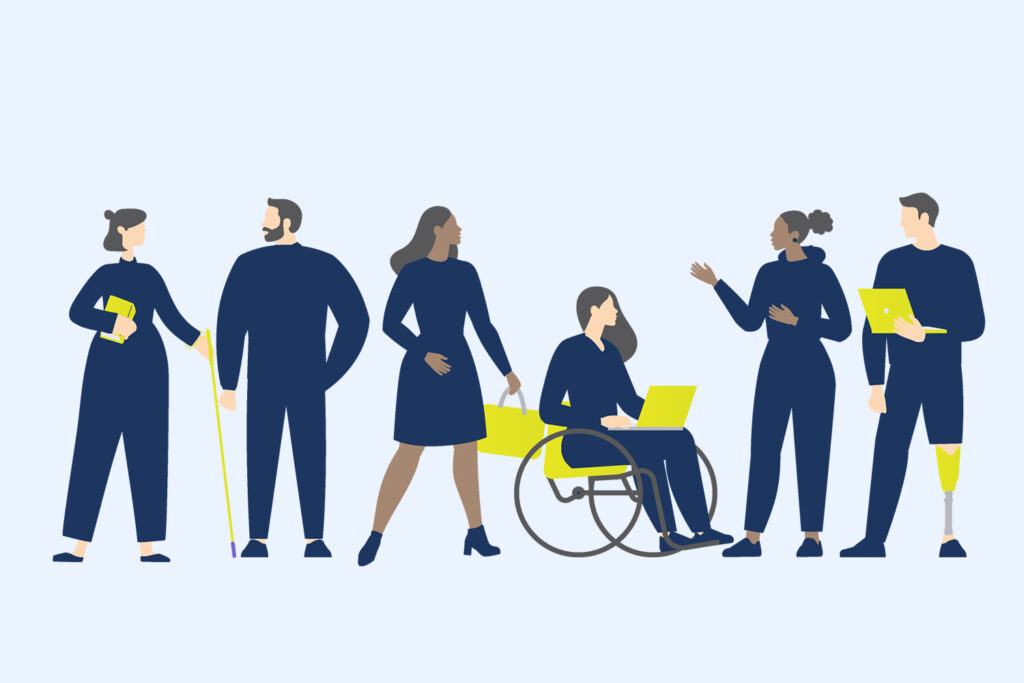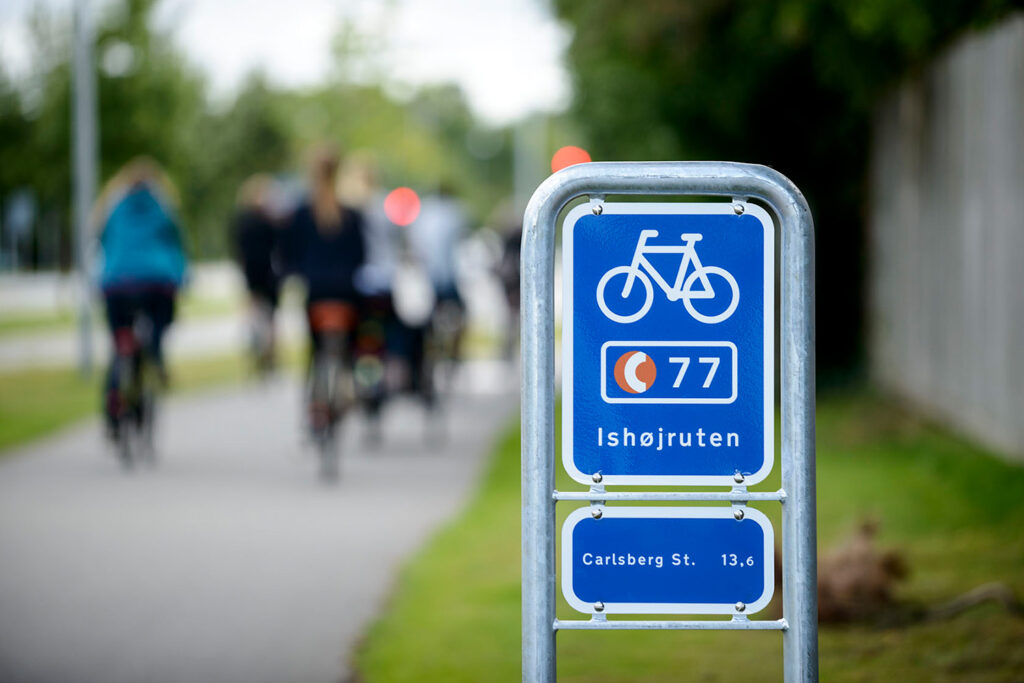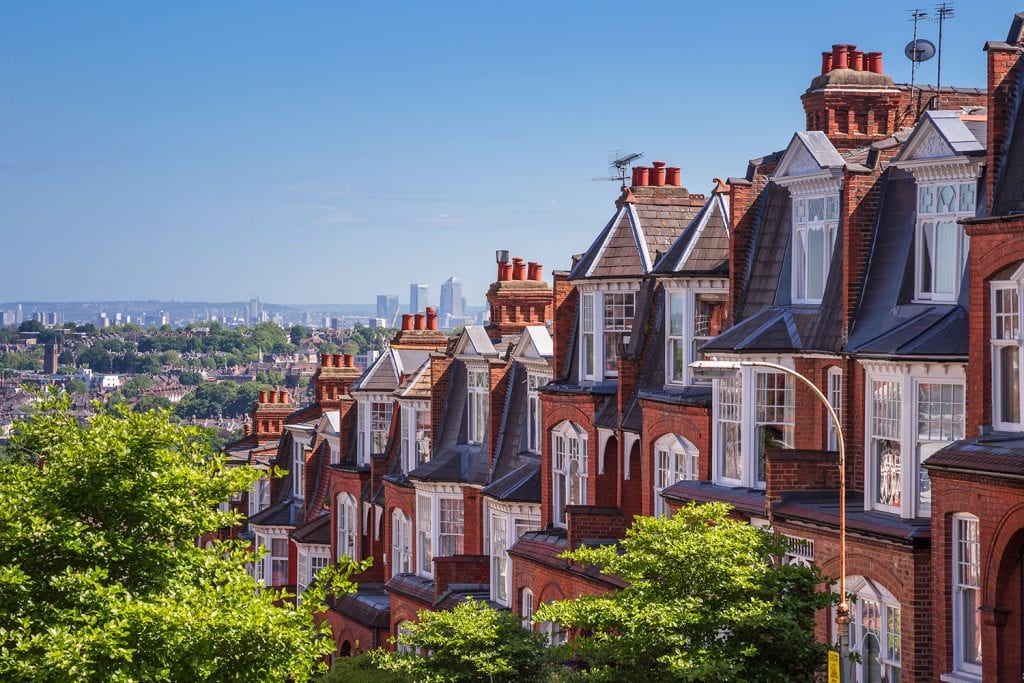Designing buildings with neurodiversity in mind
The Royal National Institute of Blind People (RNIB) engaged Buro Happold to develop the inclusive design for the fit-out of its new London headquarters, the Grimaldi Building. The project pioneers neurodiversity-conscious design, leading the way to ensure a truly inclusive and accessible space for all.
The Grimaldi Building – the new London headquarters for the Royal National Institute of Blind People (RNIB) is much more than an office space. It features everything from recording studios and a radio station, to consulting rooms for people experiencing sight loss conditions and an RNIB shop for day-to-day living products. There is even a “Living Room” area replicating a domestic lounge, equipped to showcase a variety of products to support people living with a range of sight conditions.
But perhaps the most progressive element of this showcase of inclusive design in Kings Cross, is that it is leading the way with incorporating neurodiversity-conscious design. The executive team at RNIB was keen that the building should aspire to be the first in the UK to adopt the new neurodiversity standard, BSI PAS 6463. Buro Happold co-sponsored the development of the PAS 6463 document alongside TfL, BBC Workplace and Forbo Flooring.
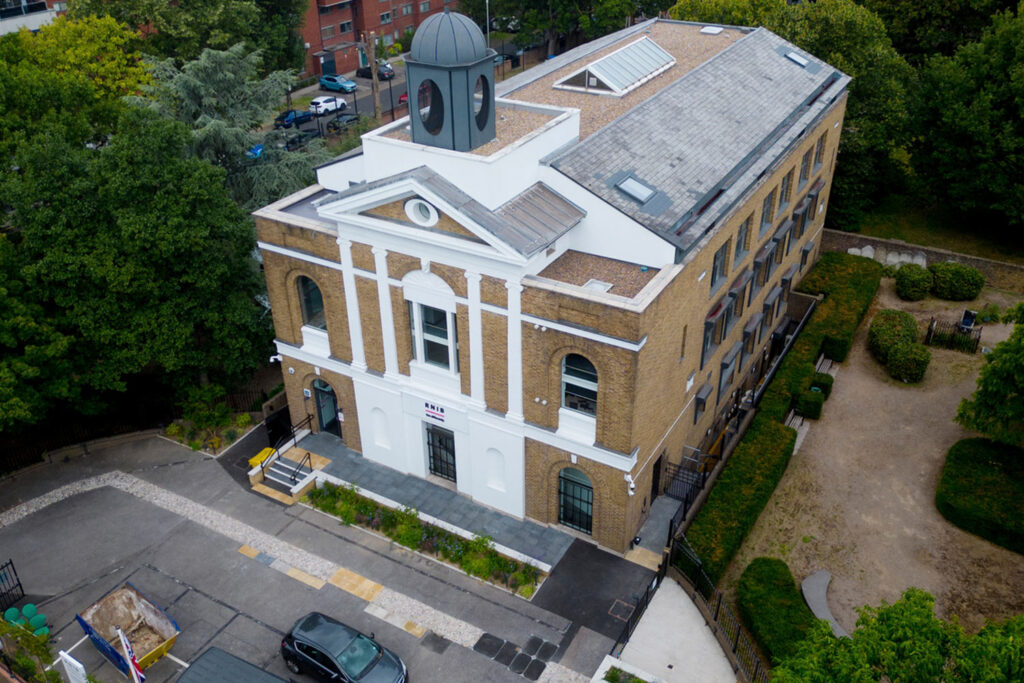
Jean Hewitt, who led the Buro Happold Inclusive Design team on the RNIB project, was just completing work on the PAS 6463 in her role as BSI-appointed technical author and, upon hearing about the new standard, the RNIB’s executive team was keen to be the first to adopt it as part of the refit.
Jean, who has sat on the British Standards Institution (BSI) committee on accessibility and inclusivity for 15 years, was asked to be technical author for the guide. She worked with a steering group of subject experts, many of whom also had lived experience of neurodivergent traits, to ensure the new PAS reflected a broad variety of lived experiences.
“PAS stands for Publicly Available Specification, which makes it sound very prescriptive, but it actually isn’t,” she explains. “It’s guidance and it’s a first toe in the water towards a formal standard. This one is around neurodiversity, and by neurodiversity we mean the whole spectrum of neurocognitive profiles, including neurotypical, neurodivergent and neurodegenerative.”
“It was so exciting to work on this, because it is such a new area,” she adds. “We knew things were going wrong for people, but the opportunity to try to capture that in some way was really at the heart of the development of the PAS. I knew so many people who had experienced difficulties from being in buildings that just didn’t meet their needs at all.”
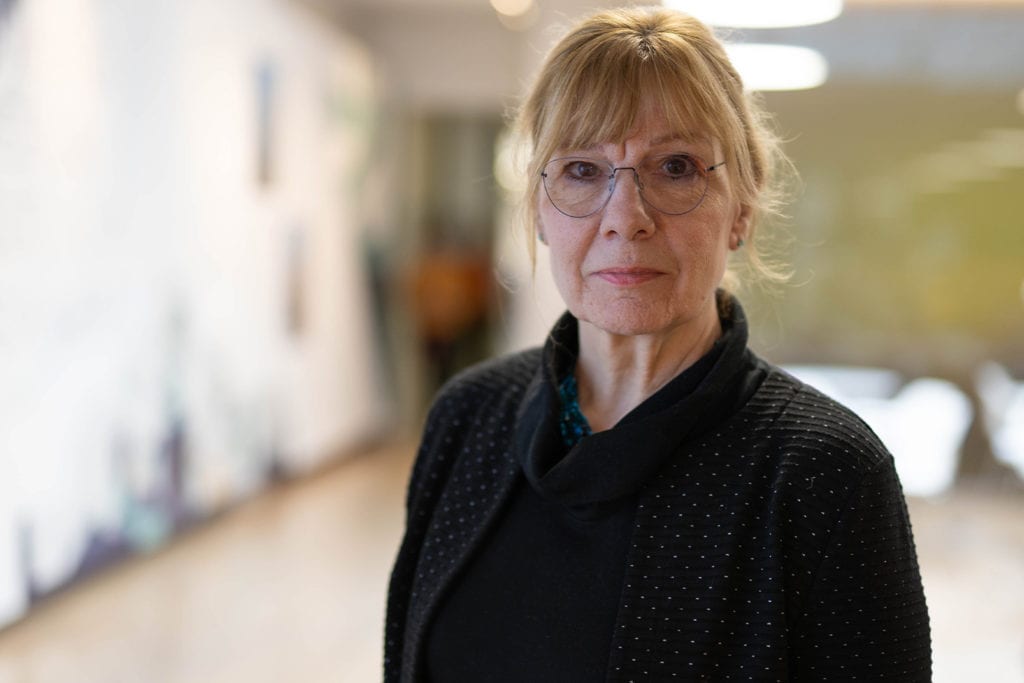
How does the built environment impact neurodiversity?
Many people find certain aspects of the built environment uncomfortable, distressing or even a barrier to their use, due to neurological differences, which affect information and sensory processing. However, with thoughtful design or management, many of the potential negative impacts can be adjusted, reduced, and sometimes even eliminated.
The BSI is the national standards body in the UK and it produces technical standards on a wide range of products and services. This includes helping to shape best practice across many elements of the built environment. Published in 2022, the PAS 6463 standard is aimed at informing a range of stakeholders – designers, planners, specifiers, facilities managers and decision-makers on design and workspace management considerations.
It gives guidance on the design of the built environment to include the needs of people who experience sensory/neurological processing differences. This particularly includes sensory hypersensitivity, which can affect sensory processing and mental wellbeing. The PAS sets out design and management considerations to ensure that people with a range of sensory/neurological processing differences are able to access and potentially enjoy their experience of the built environment equally. This includes people with autism, ADHD, dementia and other neurodivergent or neurodegenerative conditions.
The guidance in PAS 6463 is primarily aimed at shaping the design of mainstream buildings and external spaces which people encounter on a day-to-day basis, such as healthcare, education, transport, recreation, retail and workplace environments. Housing is not specifically covered although the guidance could be applied to common areas of flats for independent or supported living.
The PAS starts with considerations of site layouts, facades and greenspace alongside detailed technical considerations for lighting, acoustics, décor and finishes. Overarching principles are used when considering wayfinding and navigation, familiarity and clarity, thermal comfort and air quality. The overriding purpose of the PAS is to improve designs and help building managers to achieve environments that offer clarity, give some control back to building occupants through choice or adjustability, and have a place to go to reset when sensory overload or anxiety occurs.

Achieving accessibility for all
At the RNIB’s new London home in the Grimaldi Building, careful interpretation and application of the PAS principles arrived at a truly inclusive and accessible space where everyone can flourish, including people with sensory differences. The design included expert input from our acoustics, asset consultancy, building services engineering (MEP), as well as our inclusive design and lighting design teams. The inclusivity-focused design solutions included appropriate use of colour and contrast such as muted tones for large surfaces, clearly identified routes, and clean layouts which were easy to navigate.
Key principles included having different types of working environments, such as collaborative and focus spaces with appropriate acoustics, as well as unique adjustability in lighting informed by user trials – to ensure that there are differing spaces to best suit the different needs of people with varying types and degrees of visual impairment and/or neurodivergent traits.
Alexia Gkika, associate lighting designer at Buro Happold, led the new lighting scheme which enables management of contrast levels and shadows and grants manual and granular control for users, with the aim of creating a relaxed environment with minimal visual clutter. The scheme uniquely allows for the adjustment of “colour temperature” and intensity in many areas, including over workplaces.

“When you intend to design a truly inclusive and accessible space for those with higher sensitivity to visual spatial stimulation, the challenges needed an architectural solution that muted tones, routes had to be clearly identified, and layouts had to be clean and easy to navigate,” Alexia said.
“An uncompromisable element of the design was to embed flexibility in the workplace. We achieved this by adopting fully controllable lighting for both intensity and colour temperature on each bank of desks, to suit individual or group preferences.”
Toar Sadia, senior inclusive design consultant at Buro Happold, had previously conducted research on exploring the design preferences of neurodivergent populations for quiet spaces.
“The interesting thing I found out from the research is that essentially your sensory profile will impact your design preferences and what you find as calming, as relaxing, as quiet,” she says. “Achieving a restorative space in a building means you need to offer flexibility for a user to adjust the space to their specific needs. The serenity room in the Grimaldi Building has been a great success and just its presence has made a big difference to how people feel about coming to work.
“In essence the project is about creating that variety, that flexibility, to allow the user to have some control over their environment at least some of the time and providing a place to go if it all becomes too much, this is especially important if you’re experiencing sensory overload, or struggling generally with mental health and anxiety.”
Read more about our work on the Grimaldi Building here.

